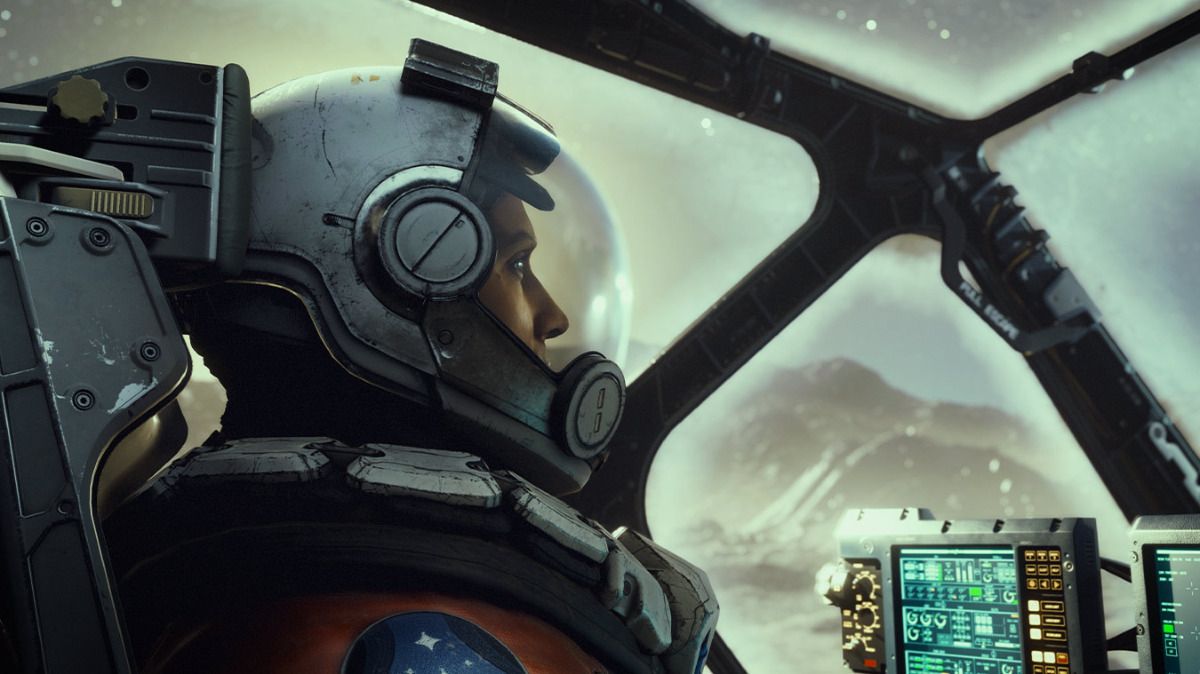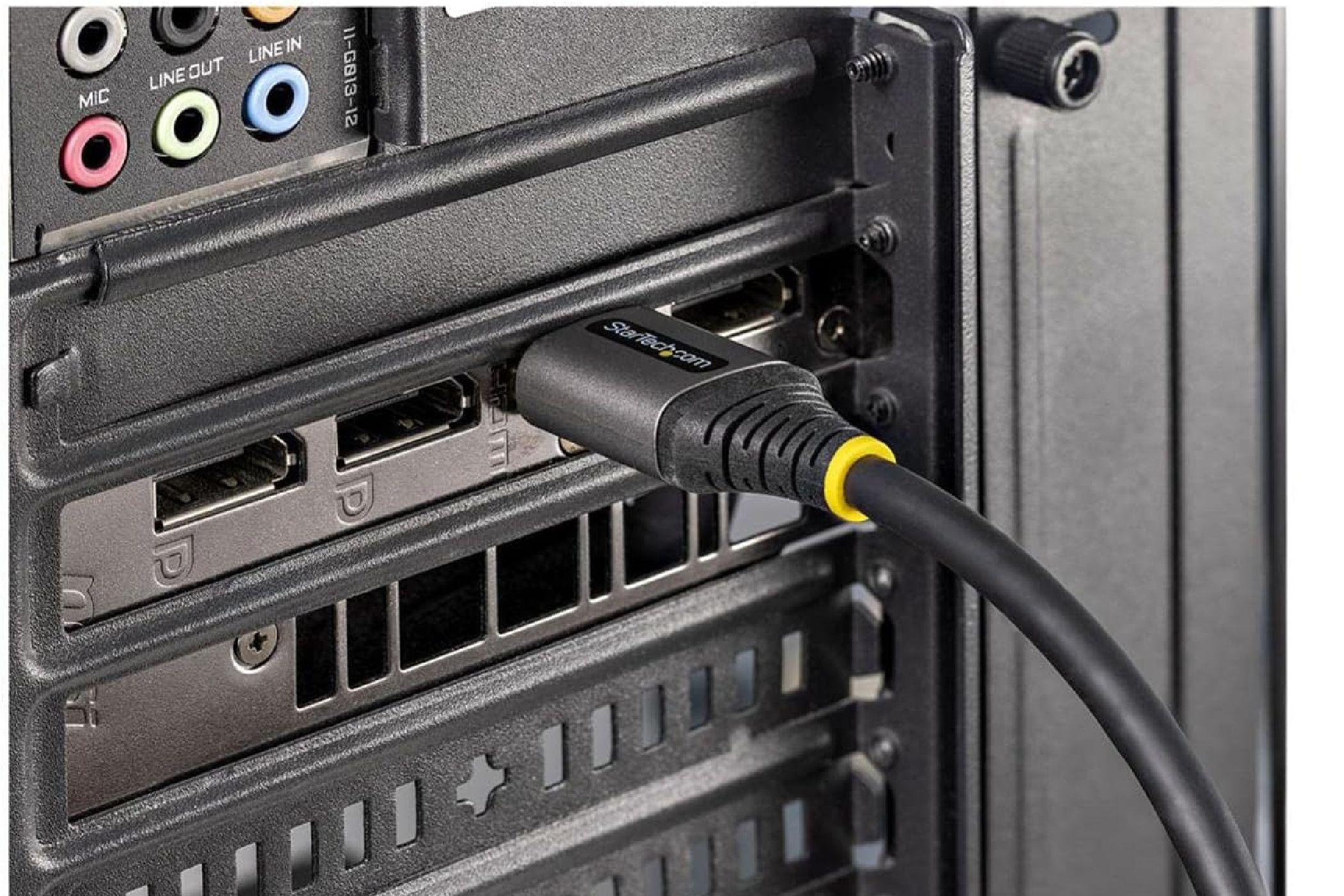Top 9 Gaming Innovations That Benefit From Upgraded GPUs - Boost Your Experience!

Top 9 Gaming Innovations That Benefit From Upgraded GPUs - Boost Your Experience!
Quick Links
- Ray Tracing and Ray Reconstruction
- AI Upscaling and Anti-Aliasing
- Frame Generation
- GPU-Accelerated Storage
- HDMI 2.1
- Mesh Shading
- Variable Rate Shading
- Resizeable BAR & Smart Access Memory
- AV1 Encoding
Key Takeaways
- Ray tracing provides a massive visual uplift, but it also requires a powerful GPU to enable.
- New AI upscaling & anti-aliasing technologies can boost visuals and performance significantly.
- GPU-accelerated storage minimizes stutter induced by slow asset loading.
We tend to overfocus on FPS benchmarks when shopping for a new GPU. There’s a plethora of new and exciting technologies that you can experience right now if you upgrade from an older GPU. These are just some of the major ones.
Ray Tracing and Ray Reconstruction
It’s been a while since ray tracing entered the mainstream with the NVIDIA RTX 20 Series back in 2018. Ray tracing is a big deal because it makes games look infinitely better thanks to more realistic lighting, shadows, and reflections, so it’s time we stopped ignoring it.
While the older RTX 20 Series cards are technically capable of handling ray tracing, you really want the last-gen 40 Series or at least 30 Series cards to get good ray tracing performance, especially on the lower end. The only RTX 20 Series card that can handle ray tracing at high settings in modern games is the RTX 2080 Ti .
As for ray tracing on AMD , the latest RDNA 3 RX 7000 Series GPUs perform best with ray tracing enabled, especially on the higher end. Budget models like the RX 7600 and high-end RDNA 2 cards can also handle ray tracing.
Ray Reconstruction is a new feature made possible thanks to NVIDIA DLSS 3.5. It utilizes machine learning algorithms to denoise ray-traced graphics without having to rely on intensive hand-tuned denoising. This means that for gaming performance, you get sharper ray-tracing visuals along with a small performance bump over traditional ray-tracing. That’s what NVIDIA tells us, anyway, because several hardware reviewers found that Ray Reconstruction can introduce trailing artifacts known as “ghosting.”
Ray Reconstruction runs on NVIDIA’s Tensor cores, and you can enable it on any NVIDIA RTX series GPU in supported games. AMD hasn’t released any similar ray-tracing features yet, but I expect that to change with RDNA 4.

AI Upscaling and Anti-Aliasing
Intel, AMD, and NVIDIA all have their own proprietary upscaling technologies in the form of XeSS, FSR, and DLSS. These upscaling algorithms allow you to render games at below native resolutions to improve performance without sacrificing visuals. Hardware-accelerated AI upscaling does a much better job at this than traditional upscaling algorithms.
If you want to run games at 1440p or 4K with a GPU that can’t handle the resolution natively, you should care about AI upscaling. Results don’t look as good at 1080p because the image is upscaled from 720p, so the original image isn’t sharp enough and doesn’t give current AI enough data to work with.
While AMD is still working on implementing AI algorithms with FSR, Intel and NVIDIA have already figured it out with XeSS and DLSS . To take advantage of AI upscaling, you’ll need an Intel Arc or NVIDIA RTX GPU.
Much like AI upscaling, AI anti-aliasing also relies on machine learning algorithms to smooth out jagged edges. There are several different anti-aliasing technologies (including those that involve upscaling like Xess, FSR, and DLSS), but arguably the best one at the moment is NVIDIA’s DLAA (Deep Learning Anti-Aliasing).
DLAA relies on AI to achieve smooth edges. It runs at your native resolution and has a performance impact, but much less so than traditional high-quality AA methods. DLAA is supported on all RTX GPUs.
Frame Generation
Frame generation (or interpolation) uses the information from two frames to insert a third frame between them using machine learning algorithms to effectively double your FPS. NVIDIA introduced frame generation with DLSS 3 , and it’s only supported on RTX 40 Series cards. It’s a hardware-accelerated feature that works really well with minimal visual artifacts.
AMD has a similar technology called AMD Fluid Motion Frames (AFMF) that works on RX 6000 and 7000 Series GPUs, but it’s a software-based solution. I have an RX 6600 XT and had the opportunity to try it in Starfield. Although it doubles your FPS, the image is very blurry and suffers from a lot of ghosting when moving, so something always looks “off,” which is why I promptly disabled it.
If you’re interested in using frame generation technology today, get an RTX 40 Series GPU. It might be worth paying a bit more for the GPU if it means that you’ll get more FPS in games that support frame generation. The technology looks incredibly promising, and I can’t wait to see how it’ll evolve over the next few years.

Bethesda / Xbox Game Studios
GPU-Accelerated Storage
Traditionally, your CPU and RAM have to decompress data from your storage drive before it can be sent to the GPU. GPU-accelerated storage skips this extra step by offloading the work from the CPU directly to the GPU, which allows games to load data significantly faster.
When I say “loading,” I’m not just referring to loading screen times; I’m talking about the continuous loading that happens as you play. GPU-accelerated storage eliminates texture pop-in and micro stutter because the GPU can access and render assets much faster thanks to fast data streaming.
This is all enabled, thanks to Microsoft DirectStorage . NVIDIA has built RTX IO on top of DirectStorage, and you can enable it on any modern NVIDIA GPU in supported games. It works best on powerful GPUs and fast NVMe SSDs . AMD is also working on its version of GPU-accelerated storage called Smart Access Storage , but it’s not yet available.
HDMI 2.1

StarTech.com
HDMI 2.1 is the latest generation of the HDMI standard and can support resolutions of up to 10K at 120FPS. You need HDMI 2.1 to enable VRR (Variable Refresh Rate), ALLM (Auto-Low Latency Mode), and a couple of other gaming-oriented features. HDMI 2.1 is even more powerful than DisplayPort 1.4, which has long been the standard for PC gamers.
If you have a compatible monitor or TV, you can take advantage of HDMI 2.1 to get the best image signal delivery possible. GPUs with HDMI 2.1 support include the AMD RX 6000 and 7000 Series, NVIDIA RTX 3000 and 4000 Series, and Intel Arc. However, if you’re using a monitor with DP 1.4, there’s no real benefit. HDMI 2.1 is best paired with a modern high-end 4K TV. VRR technologies like NVIDIA G-Sync work just fine on DisplayPort.
Mesh Shading
Without getting too technical, graphics-accelerated mesh shading allows a GPU to render more graphics with less data. If a game uses mesh shaders, but a GPU doesn’t support it, it leads to serious performance issues that can render the game unplayable. We saw that recently with Alan Wake 2, so things are only going to get worse for old GPUs from here.
You don’t even need that much of a recent GPU to get mesh shaders. Older NVIDIA Turing GPUs (GTX 16 and RTX 20 Series), AMD RDNA 2 (RX 6000 Series), and Intel Arc GPUs all support parallel mesh shaders. If you’re still on an old high-end GPU, like the GTX 1080 Ti or RX 5700 XT, maybe the time has come for an upgrade.
Variable Rate Shading
Variable Rate Shading (VRS) is an algorithm that allocates more GPU resources to render parts of the image that most need it. For instance, if you’re driving a car in Forza Horizon 5, your car and the sky mostly stay the same, but the rest of the environment changes at an extremely fast pace.
By focusing the resources on the environment, your GPU is able to render the image more efficiently, resulting in more FPS. It’s especially useful in VR because the GPU can spend more time rendering what’s in front of you. Just like mesh shading, VRS was introduced with Turing GPUs. It also works on Intel GPUs. AMD has its own version called FidelityFX Variable Shading, which works on RDNA 2 and newer GPUs.
Resizeable BAR & Smart Access Memory
Resizeable BAR , or ReBAR for short, allows your CPU to access the full GPU VRAM instead of transferring data in 256MB chunks. As you can imagine, this leads to a direct performance increase in most games. ReBAR works on both NVIDIA and Intel GPUs. AMD’s version is called Smart Access Memory. It’s worth noting that you don’t just need a compatible GPU; your CPU and motherboard also need to support ReBAR to work.
AV1 Encoding
The AV1 codec is the successor to the HEVC video streaming codec. AV1 supports hardware-accelerated decoding that improves bandwidth speeds and image quality. It’s a game-changer if you like to capture in-game footage or stream games on platforms that support AV1 because you get significantly better video quality. AV1 is supported on RTX 30 and 40 Series, AMD RDNA 2 and 3 GPUs, and Intel Arc
GPU improvements go far beyond raw GPU performance and FPS. I’ve tried to shed some light on the most significant technological leaps in GPUs over the past few years, and I think that many of these technologies are worthy of an upgrade, even if you’re happy with your current setup. If you agree, check out our list of the best graphics cards for excellent suggestions for your next GPU.
Also read:
- [New] In 2024, Party Pulse Perfect DJ Content for Events
- [New] In 2024, Review Unveiling the Potential of Vidma Capture Tech
- [New] Vocal Variety at Your Fingertips Top 7 Speech Modification Apps Reviewed for 2024
- [Updated] 2024 Approved Ultra HD LG 27UHD68 4K FS Display & Smooth Sync Test
- [Updated] Multimedia Text Producer
- In 2024, Top 9 Asus ROG Phone 7 Monitoring Apps for Parental Controls | Dr.fone
- In 2024, Ultimate Trailer Treasure Chest
- Premium Gaming Experience with Corsair's Latest Luxe Woodgrain Computer Chassis
- Revamping the Nintendo Switch Online Shop: Why It's Time for an Upgrade with New Console Features
- The Stealthy Script: Understanding Covert Tracking Codes in All Your Prints
- The way to get back lost call history from Lava
- This Week in Mobile Innovation: Anticipated Releases From Google and Samsung Examined
- Top 10 Ausgezeichnete Verlosungsseiten Für Deutsche Gutscheine Und Gratisartikel
- Top 5 Benefits of Investing in Your Own Laser Engraving Machine
- Top Picks: The Ultimate Guide to the Best iPad Air Cases (13-Inch)
- Top-Rated iPad Air Gadgets & Enhancements in 2N24 - Your Ultimate Shopping Guide
- Ultimate Tips & Tricks for Efficiently Screenshots Using Google Chromebook Devices
- Title: Top 9 Gaming Innovations That Benefit From Upgraded GPUs - Boost Your Experience!
- Author: Richard
- Created at : 2024-12-06 02:54:39
- Updated at : 2024-12-13 00:12:50
- Link: https://hardware-updates.techidaily.com/top-9-gaming-innovations-that-benefit-from-upgraded-gpus-boost-your-experience/
- License: This work is licensed under CC BY-NC-SA 4.0.